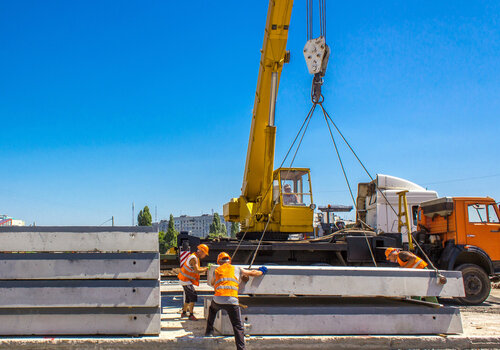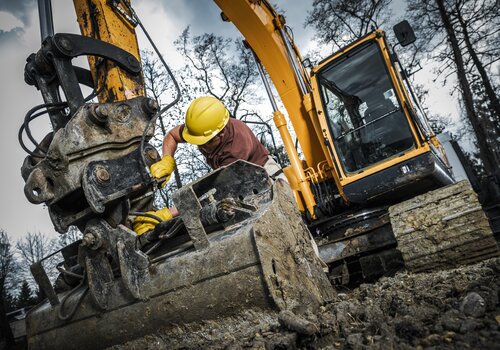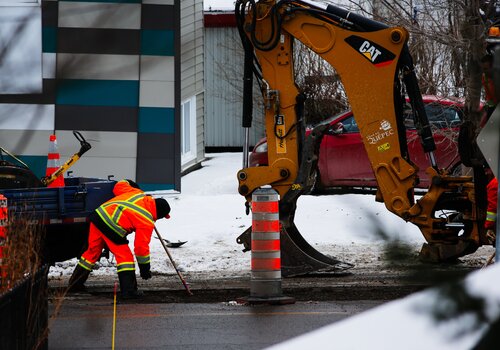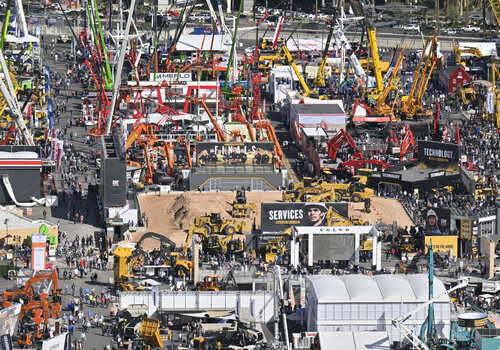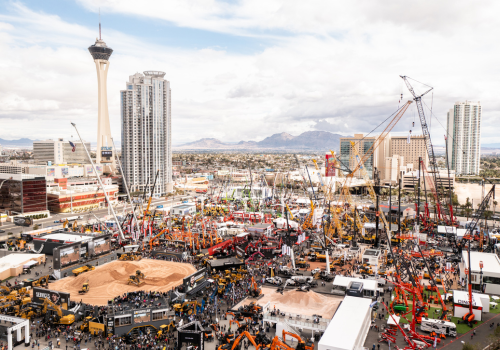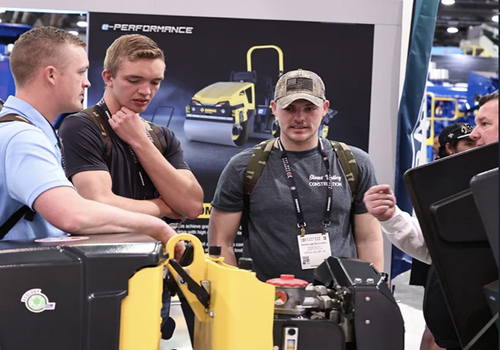You can have the best equipment in the world but if you’re not using it correctly or outfitting it properly, you could be putting your crew at risk.
That’s the simple truth Tony Groat wants contractors to understand. As North America Regional Manager for the International Powered Access Federation (IPAF), Groat has spent decades helping the industry raise the bar on mobile elevating work platform (MEWP) safety. At CONEXPO-CON/AGG 2026, he’ll bring that mission to life in his session, Smart MEWP Selection: The Accessories That Take Safety Further, happening Thursday, March 5, from 1:00–2:00 p.m.
“It’s not just about picking the right lift,” Groat says. “It’s about equipping it for safety and efficiency.”
SAFETY STARTS WITH SMARTER CHOICES
Founded in 1983, IPAF is a not-for-profit organization that promotes the safe and effective use of powered access equipment worldwide. Its members include manufacturers, rental companies, distributors, contractors and users who represent the majority of the global MEWP fleet. Through technical guidance, training and safety initiatives, IPAF helps companies make better, more informed decisions when working at height.
At CONEXPO-CON/AGG 2026, Groat’s mission is to challenge contractors to think beyond height and capacity. The difference between “good enough” and “right for the job,” he says, can be measured not only in time and money but in lives saved.
“It’s essential that foremen and supervisors identify unsafe practices and make it clear they are not acceptable and require change,” he says.
He encourages a proper risk assessment that accounts for the full task, site conditions and potential hazards. A quick equipment choice may feel efficient in the moment, but it can lead to costly delays, inefficiencies or even accidents. “Selecting a 60-foot self-propelled lift to work on a two-story building just because you own one may be a bad choice that has unplanned consequences,” he says.
THE POWER OF ACCESSORIES
Once the right machine is chosen, Groat says the next step is outfitting it wisely. “After selecting the correct MEWP, one must focus on the many accessories and options available in today’s market, many of which can influence or even change your final equipment choice.”
He highlights a range of tools worth considering:
-
Outriggers for stability on uneven ground
-
Secondary guarding systems for confined or obstructed spaces
-
Fall protection systems for safe entry and exit
-
Intelligent anchorages that remind operators to clip in before movement
-
Perimeter lighting or visual alerts to warn others nearby
These accessories, Groat says, can elevate both safety and performance. “Completing tasks efficiently and safely go hand in hand and can’t be separated,” he explains. Platform extensions reduce overreaching and fatigue, while material-handling attachments make it easier to move loads safely and prevent tip-overs.
Too often, contractors skip these options because they’re seen as extras. But to Groat, that’s like renting a drill without the right bits. “Know what you need to get the job done efficiently and safely,” he advises.
COMPLIANCE IS NON-NEGOTIABLE
Groat also stresses that compliance with ANSI A92 standards is more than a box to check; it’s a fundamental safety requirement.
“One of the most important and basic requirements is the need to develop a MEWP-specific Safe Use Plan and to ensure that all individuals who supervise MEWP operators complete MEWP supervisor training,” he explains. “There are no shortcuts when it comes to compliance. Employers must know and meet their MEWP safety responsibilities.”
That means understanding not only what equipment is used, but how, where and by whom. Supervisors must be trained and able to evaluate operator proficiency on the spot.
TURNING DATA INTO DECISIONS
Today’s MEWPs come equipped with technology that can transform how contractors manage risk if they know how to use it.
“Data is information that can be useful or just more data,” Groat notes. “What does it mean to you and how can data become actionable information?”
Manufacturers now offer telematics and digital monitoring tools that track how MEWPs are operated, where they’re used and under what conditions. When analyzed correctly, that data becomes a roadmap for improvement that includes identifying unsafe behaviors, scheduling preventative maintenance, or optimizing fleet utilization.
Groat points out that some contractors are already using these tools to retrain operators or prevent downtime before it happens. “The real value lies not in collecting data, but in using it to make informed decisions that enhance safety, productivity and compliance,” he says.
BUILDING A SAFETY-FIRST CULTURE
Groat knows that technology alone won’t prevent accidents. People will. And that starts with leadership.
“Work habits are shaped by the actions that management and supervisors accept and reinforce,” he says. “If risky operations that ‘get the job done’ are applauded or overlooked, they can quickly become accepted habits.”
That’s why it’s critical for foremen to lead by example and consistently address unsafe behaviors. “Just because a risky activity did not result in an accident today does not mean it is okay and can be repeated,” Groat emphasizes. “Practice makes perfect only applies when you are practicing correct procedures.”
Creating a “safety-first” mindset, he adds, means rewarding good behavior and encouraging open conversations about hazards before they turn into headlines.
TRAINING THAT LASTS
Training is another cornerstone of safety, and it’s not a one-time event. “The key questions are: what constitutes acceptable training, and how long is it effective?” Groat asks.
He urges companies to ensure that their training programs truly meet the MEWP training standard, rather than simply claiming compliance. “Supervisors need to assess whether operators are truly proficient in both knowledge and practical skills,” he says. That evaluation should inform retraining schedules and guide how companies maintain consistent performance across teams.
IPAF offers extensive free tools and resources to help contractors benchmark their programs and stay current with standards year-round.
INNOVATION ON THE HORIZON
Groat has watched MEWP technology evolve for five decades, and he’s never been more optimistic. He’s particularly excited about innovations like mid-rail platform extensions, intelligent anchorages, platform load-sensing and LiDAR anti-crushing systems, which are redefining how crews operate safely and efficiently.
Each of these developments, he says, helps solve a common problem like overreaching, overloading or loss of situational awareness before it leads to injury.
WHY CONEXPO-CON/AGG MATTERS
For Groat, the message he hopes attendees take away from CONEXPO-CON/AGG 2026 is simple: safety and productivity are not opposites; they’re partners.
“The key takeaway is increased awareness of the facts required to properly select a MEWP and the tools needed to undertake the task safely and efficiently,” he says.
Now entering his fifth decade in the industry, Groat still believes in the power of education and in the people who make construction safer every day. “People want to do the right thing,” he says. “Education is a tool that will influence good decisions.”
For contractors attending the 2026 show, he encourages them to come ready to learn, ask questions and explore what’s next in MEWP innovation.
“CONEXPO-CON/AGG is a huge platform to educate equipment users,” Groat says. “It is a great venue to offer education and reach users of equipment.”
Learn more about Tony Groat’s session, Smart MEWP Selection: The Accessories That Take Safety Further, at CONEXPO-CON/AGG 2026 and register today.
Photo credit: SHUTTERSTOCK/KIRILL NEIEZHMAKOV

